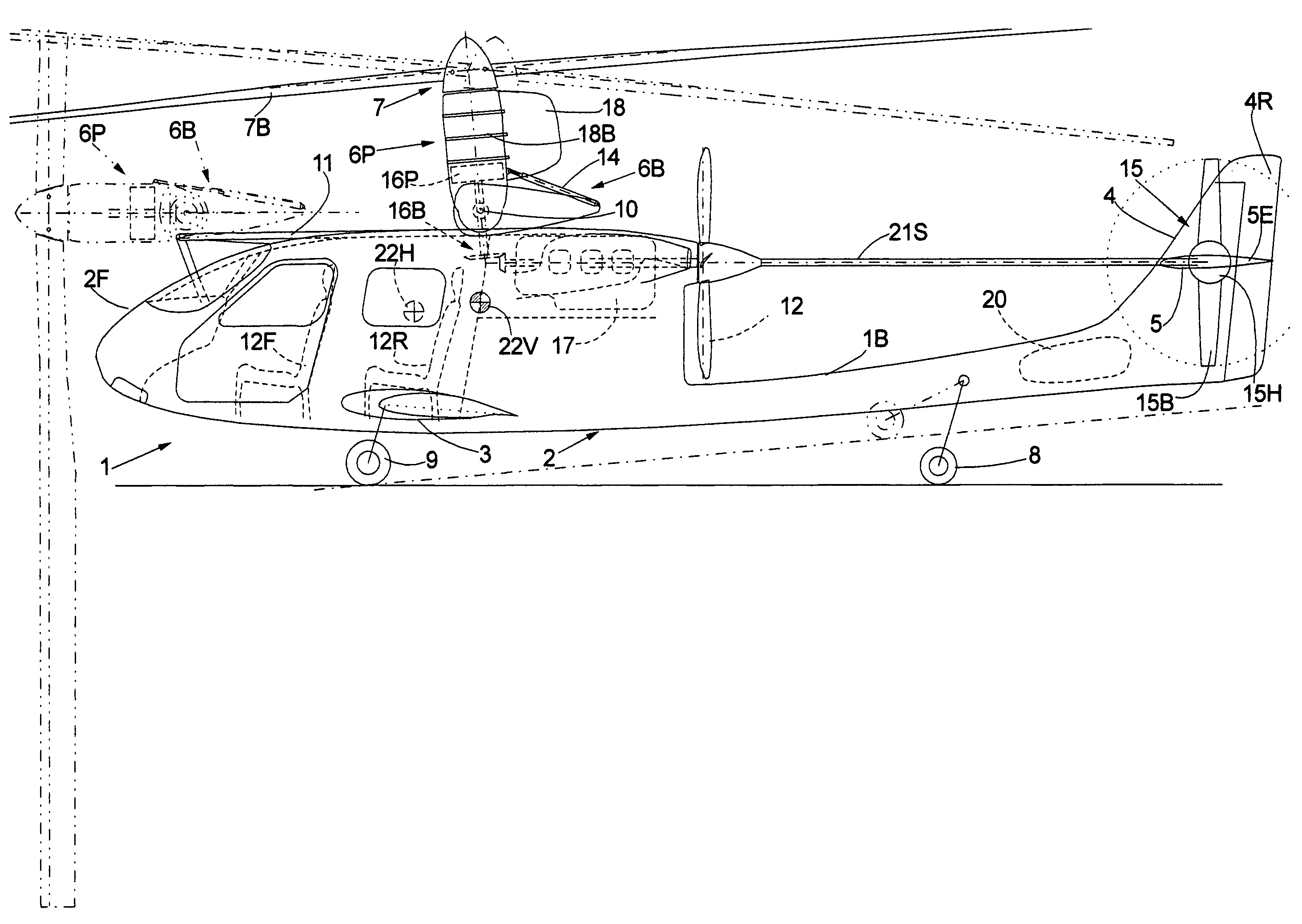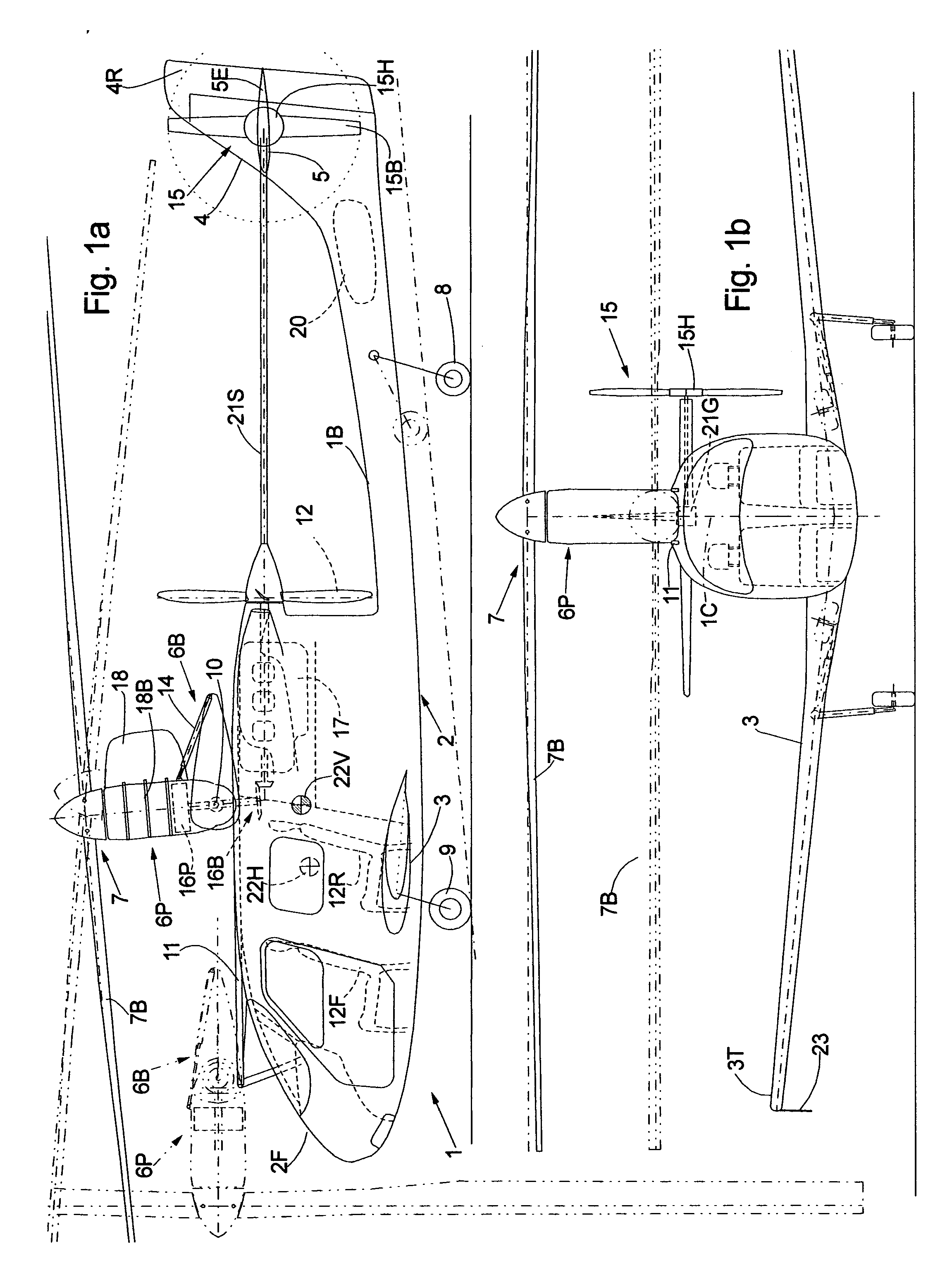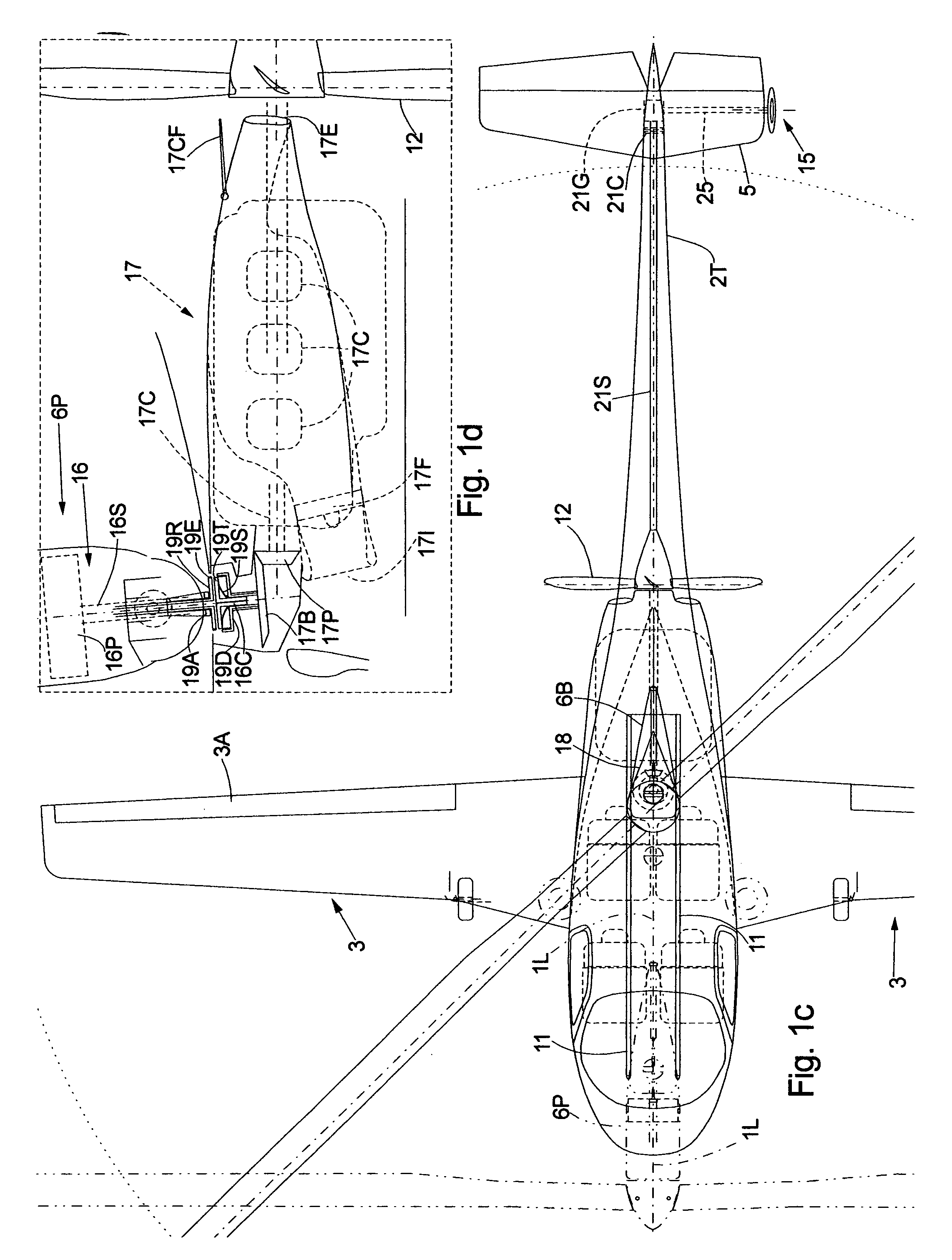High performance VTOL convertiplanes
- Summary
- Abstract
- Description
- Claims
- Application Information
AI Technical Summary
Benefits of technology
Problems solved by technology
Method used
Image
Examples
Embodiment Construction
[0025] Overview
[0026] Referring to FIG. 1a there is shown a 4-seat convertiplane designated in its entirety by reference numeral 1, with a fuselage 2, a pair of wings 3, conventional landing gear arrangement with a retractable rear wheel 8 and a pair of retractable main wheels 9, vertical fin 4 with rudder 4r, and a horizontal stabilizer 5 with elevator 5e as in conventional airplane arrangement. For a low Center of Gravity (CG) 22V with respect to the ground, a cantilever low wing configuration is selected. For motive power during cruising flight mode, a single conventional aircraft engine 17 mounted aft of the cabin directly driving a 4-blade pusher propeller unit 12 . Propeller unit 12 is of variable-pitch design capable of zero pitch during the hovering mode and is featherable for maximum gliding efficiency in case of engine failure. Engine 17 is also connected to a bevel gear reduction unit 16B for vertical transfer of rotational power from the engine 17 to transmission 16P fo...
PUM
 Login to View More
Login to View More Abstract
Description
Claims
Application Information
 Login to View More
Login to View More - R&D
- Intellectual Property
- Life Sciences
- Materials
- Tech Scout
- Unparalleled Data Quality
- Higher Quality Content
- 60% Fewer Hallucinations
Browse by: Latest US Patents, China's latest patents, Technical Efficacy Thesaurus, Application Domain, Technology Topic, Popular Technical Reports.
© 2025 PatSnap. All rights reserved.Legal|Privacy policy|Modern Slavery Act Transparency Statement|Sitemap|About US| Contact US: help@patsnap.com



